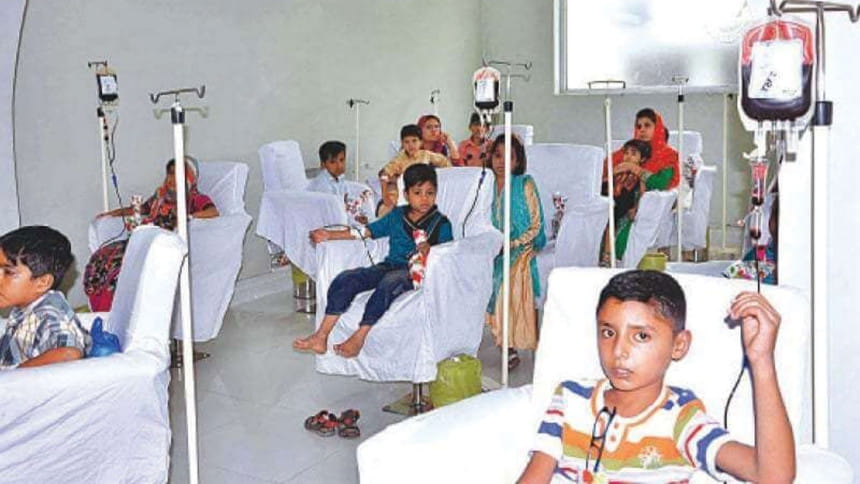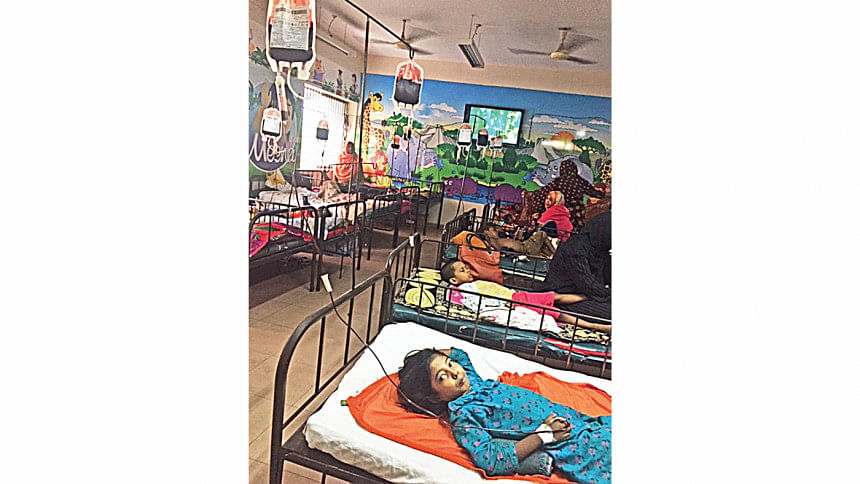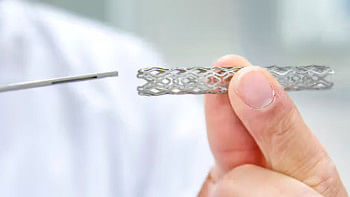Thalassaemia in Bangladesh: Prevention strategy

Thalassemia is Bangladesh's most common congenital disability. Our country has 17 million thalassemia carriers and 14,000 new cases each year. Thalassaemia causes low haemoglobin. It is not contagious and cannot be spread by direct contact. When both parents are carriers, it is passed to their children.
Most carriers are normal, and mildly anaemic ones are diagnosed with iron deficiency. Mildly anaemic carriers are given iron supplements but do not raise haemoglobin and can harm them. These subjects' anaemia must be diagnosed. Clinically, carriers cannot be detected; a Haemoglobin Electrophoresis (HbE) test is required. Hb electrophoresis helps determine carrier status. A healthy couple may give birth to a thalassaemic child with lifelong illness and financial and mental strain. Thalassemia has two types. Our country has thalassemia major and Hb E beta.
As treatment is expensive and lifelong, most patients cannot afford it and develop complications and die young. Depending on age, frequency of transfusions, and dosage, it costs Tk 5,000 to 10,000 per month. Our country has 140,000 thalassemia patients. No patient registry exists. These patients need expensive treatment. Every year, many thalassemic are born. Preventing thalassemia births is best.
Awareness of the disease, carrier detection, prenatal diagnosis, and abortion of affected fetuses have successfully prevented thalassemia births in Cyprus, Greece, and Iran.

Prenatal diagnosis determines if a fetus has thalassaemia 10 to 15 weeks before birth if both parents are carriers.
The government must create prenatal diagnosis facilities, disease awareness, and carrier detection. Each division should set up DNA labs and train gynaecologists to collect prenatal samples and molecular biologists or biochemists to analyse DNA. Prenatal diagnosis is done in only two places. One at Dhaka Shishu Hospital, another privately. There are 17 million carriers and many young people of marriageable age. Two DNA labs in Dhaka will help a fraction of these carriers.
There are two methods for the collection of samples from the fetus of the mother, and the sample collected is sent for DNA analysis.
1. Chorionic villus sampling
2. Amniocentesis
Chorionic villus sampling (CVS) is a small sample of the developing placenta's genetic material. The placenta tissue is obtained using an ultrasound-guided needle inserted through the abdominal wall. The chorionic villi are aspirated. This technique can be used after 11 weeks. CVS is preferred because it is done in the first trimester of pregnancy within many countries' abortion laws. It reduces the emotional stress of late-pregnancy complications.
Amniocentesis is amniotic fluid analysis. This is done after 15 weeks. The procedure involves aspirating 15-20 ml of amniotic fluid through the abdomen under ultrasound guidance. This method's procedure and diagnosis are late. The mother's abortion is traumatic. DNA analysis determines if the fetus is affected, a carrier, or normal. If the fetus is affected, the parents can abort or continue the pregnancy.
Dhaka Shishu Hospital Thalassaemia Centre recently opened a DNA lab to analyse chorionic villus and amniotic fluid samples to detect fetuses whose parents are thalassemia carriers or have a previously affected child. This will help to detect the thalassemia cases.
The writer is the President of Dhaka Shishu Hospital Thalassaemia Centre.
Email: [email protected]

 For all latest news, follow The Daily Star's Google News channel.
For all latest news, follow The Daily Star's Google News channel. 



Comments